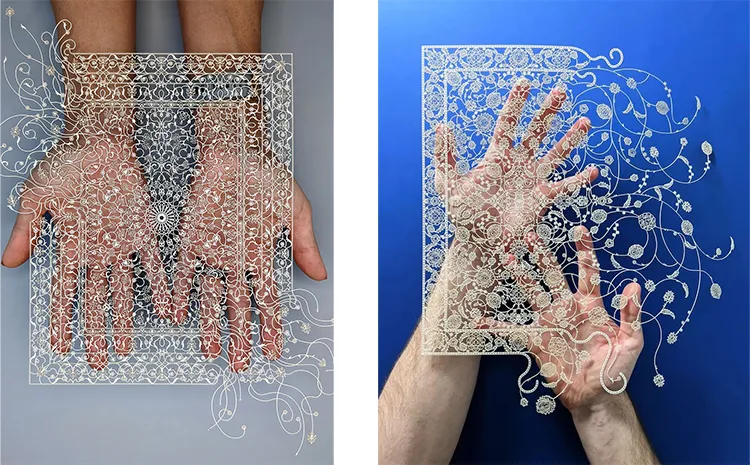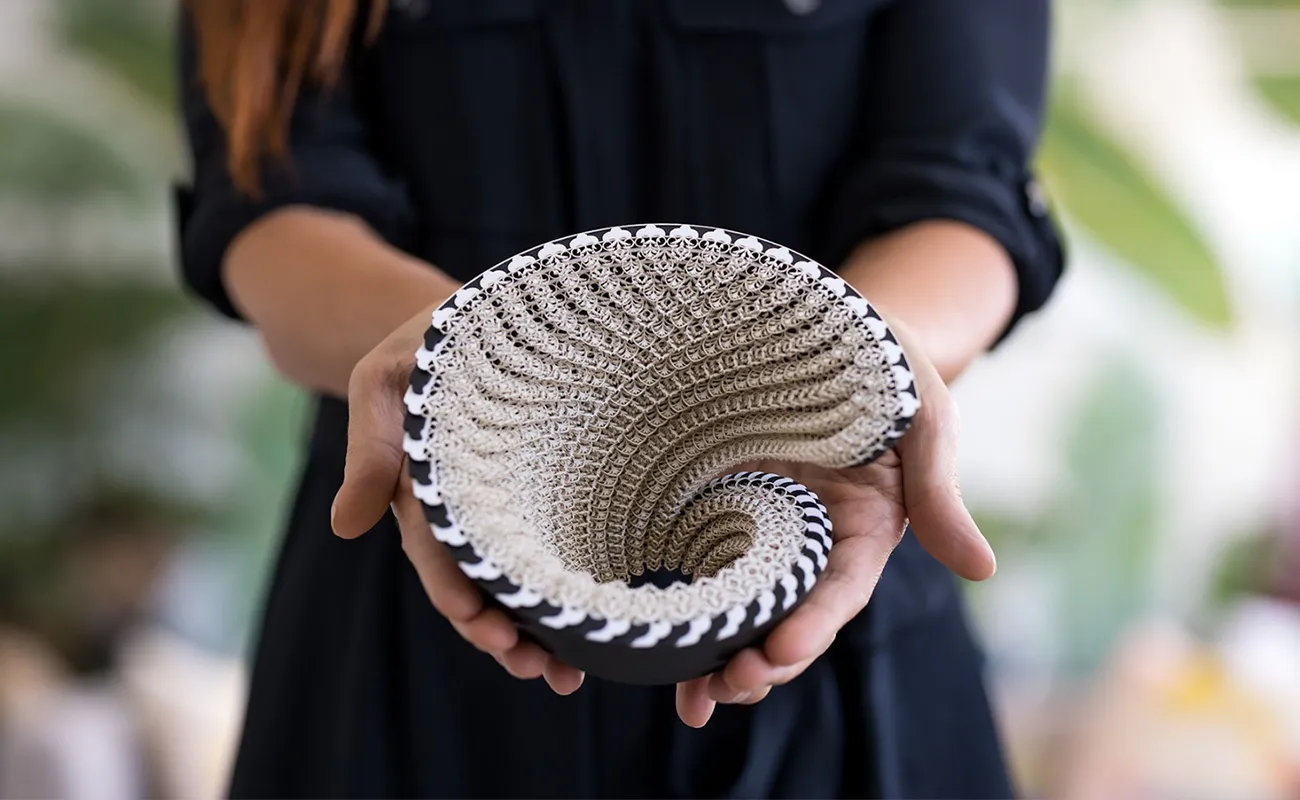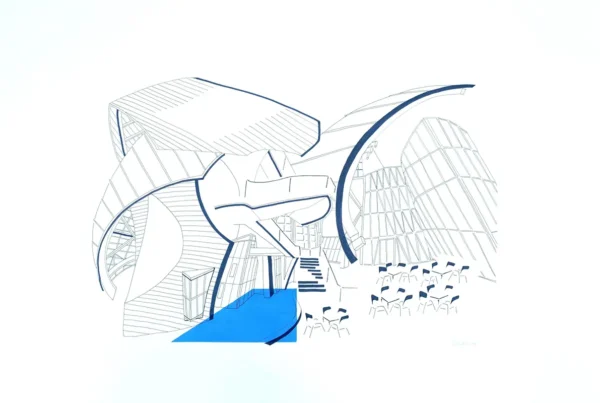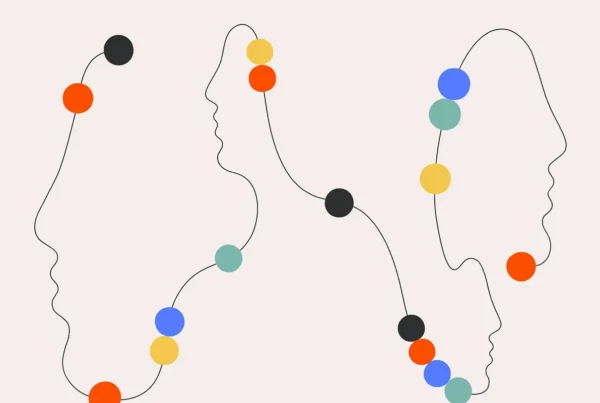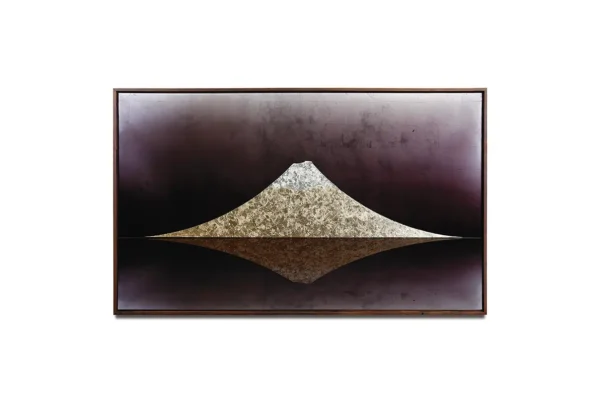Julia Ibbini: The Fusion of Art, Geometry, and Cultural Narratives
Julia Ibbini, a Jordanian-British artist based in Abu Dhabi, stands at the intersection of contemporary art, design, and digital craftsmanship. Alongside computer scientist Stéphane Noyer, Ibbini leads Ibbini Studio, an award-winning creative partnership that blends traditional artistry with cutting-edge technology. The studio’s body of work intricately layers digital precision with human creativity, reflecting a deep fascination with patterns, geometry, and cultural motifs. Each piece they create is an exploration of mathematical beauty, material delicacy, and cross-cultural narratives, requiring months or even years to complete.
Central to Ibbini’s process is a maniacal obsession with patterns. Her creative journey begins with extensive research into the history and migration of ornamental motifs, tracing their evolution through cultures and continents. These patterns, which might draw inspiration from anything as diverse as ancient Islamic designs, topographical maps, or even electronic music, are meticulously layered into visually stunning artworks. Her practice challenges the boundaries between design, craft, and coding, with each creation meticulously shaped by both the hands of the artist and the precision of the machine.
The studio’s dedication to innovation has earned them numerous accolades and a prominent place in the art world. From showcasing at prestigious venues like the Sharjah Islamic Arts Festival to winning the Van Cleef & Arpels Middle East Designer Prize, Ibbini and Noyer continue to push the envelope. Their work, which has been displayed at Art Basel Miami, Ann Arbor Sculpture Museum, and LA Art Fair, highlights a unique synthesis of tradition and technology, where the old and the new coexist in intricate harmony.
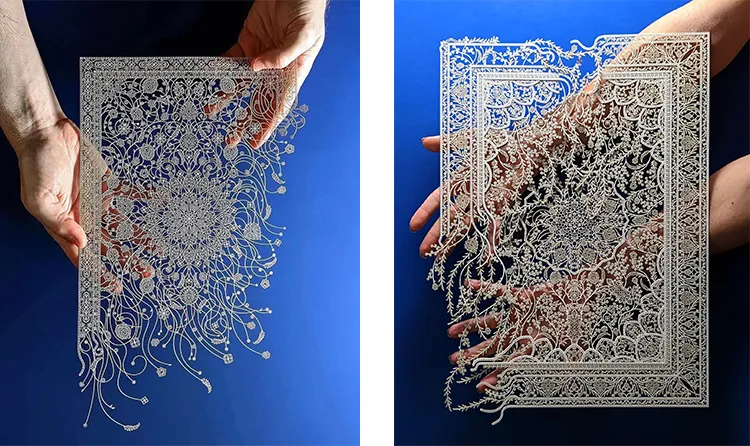
Julia Ibbini: Crafting Identity Through Complex Layers
Julia Ibbini’s artistic journey is deeply intertwined with her heritage and personal experiences. Born to a Jordanian father and a British mother, Ibbini has spent most of her life in the Middle East, and this multicultural background profoundly influences her work. Her creations reflect a continuous exploration of identity, capturing the complexities of belonging to multiple worlds and the delicate interplay of tradition and modernity. This tension between different cultural influences is beautifully expressed in her intricate laser-cut works on paper, where she weaves together elements from Islamic architecture, historical ornamentation, and contemporary design.
The process of creating these pieces begins with extensive digital drawings, layered in complexity over time. Each drawing is then translated into a highly detailed laser-cut artwork, with the material itself—often paper, veneer woods, or mother of pearl—playing an essential role. These materials are chosen not just for their tactile and delicate qualities, but for how they reflect the fragility and complexity of the patterns she works with. The result is a visual narrative that speaks to both the intricacy of human experience and the precision of computational design.
For Ibbini, the act of making art is not just a profession but a necessary part of her life. She often describes her work process as a daily ritual, an almost compulsive need to create in order to avoid feeling creatively stifled. This relentless pursuit of artistic expression, paired with an unyielding determination, has been key to her success. Even when faced with the many challenges inherent in the art world, Ibbini’s resolve never wavers, and she continues to push forward, always refining her craft and expanding her horizons.

Bridging Tradition and Technology: A Collaborative Vision
At the heart of Ibbini Studio is the powerful collaboration between Julia Ibbini and Stéphane Noyer, a partnership that has been pivotal in shaping the studio’s innovative approach. Noyer’s background in computer science and computational geometry complements Ibbini’s expertise in visual art and design, allowing them to seamlessly blend the digital with the analog. Together, they create works that are not only aesthetically beautiful but also structurally complex, using advanced algorithms to design intricate forms that would be impossible to achieve by hand alone.
This combination of technology and artistry is most evident in their three-dimensional sculptures, where layers of laser-cut paper are assembled to form highly detailed, geometrically precise pieces. These works often draw on architectural motifs and traditional ornamentation, but with a modern twist, as seen in their recent exploration of negative space. In some of these newer pieces, the structures appear to dissolve or fade into open space, creating a striking contrast between form and emptiness. The duo uses graph theory and probabilistic algorithms to control the density and geometry of the artwork, giving it a sense of organic growth, almost as though it is evolving in real-time.
The collaborative dynamic between Ibbini and Noyer extends beyond the creative process and into their personal lives. Their partnership began serendipitously through a shared love of running, which led to a deeper connection and eventual marriage. Noyer’s logical approach to problem-solving balances Ibbini’s more instinctive and emotional artistic process, creating a harmony that is reflected in their work. Together, they have redefined the boundaries of what is possible when art meets technology.
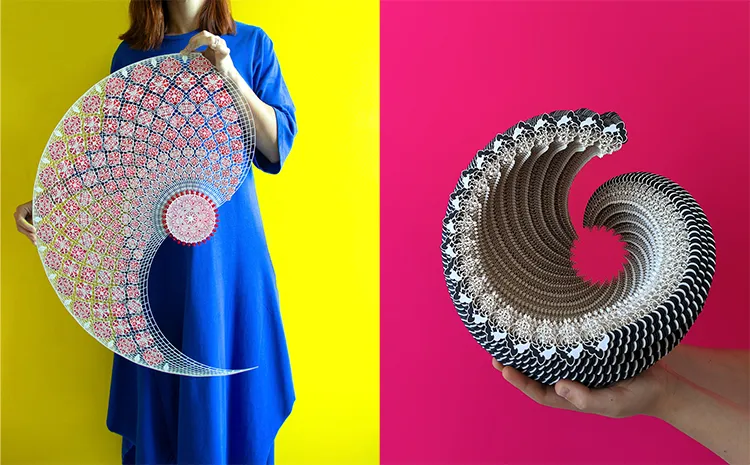
Julia Ibbini: Pattern, Precision, and Perseverance
Julia Ibbini’s approach to art is driven by a deep-rooted obsession with patterns and a relentless commitment to her craft. Whether inspired by ancient cultural motifs or modern digital aesthetics, her work is an exercise in precision and patience. She has often described her artistic process as a long, methodical journey, with some projects taking up to a year to complete. This careful attention to detail is not just a reflection of her technical skill, but of her deep understanding of the cultural significance behind the patterns she uses, tracing their historical and geographical origins across different civilizations.
The materiality of her work also plays a crucial role. Whether she is working with paper, wood, or mother of pearl, Ibbini selects materials that enhance the intricate qualities of her designs. The tactile nature of these materials adds depth to her pieces, creating a sensory experience that goes beyond the visual. Layering these materials through a complex collage technique, Ibbini creates artworks that feel alive with texture and intricacy, each one a testament to her meticulous process.
Ultimately, Ibbini’s greatest strength lies in her determination. Despite facing numerous challenges along her artistic journey, she has never given up on her passion. This perseverance is what she considers her greatest achievement. For Ibbini, the path to success has not been easy, but her unwavering focus on her work, combined with her willingness to push boundaries and take creative risks, has established her as a leading figure in the world of contemporary art and design.
